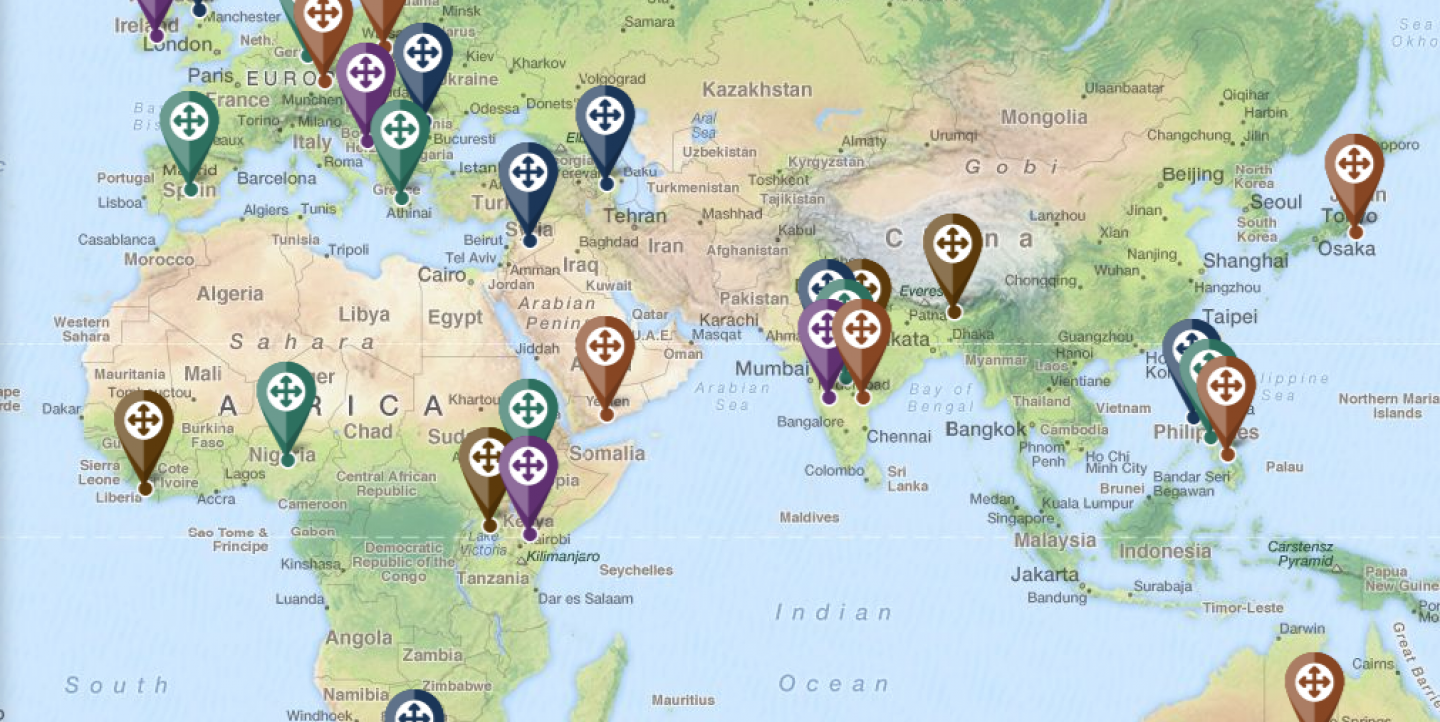Journalists who use interactive maps to tell their stories have a new tool to try.
MapJam, a San Francisco-based startup, lets users personalize maps with photos, videos and other rich media incorporated onto each location pin.
Businesses and individuals have been using the tool’s array of applications to customize maps. Race organizers used the platform to show spectators and racers' key points along the course. Hostelling International created a map to provide a guide to Boston for visitors, complete with graphics and descriptions of attractions plotted onto each point along a mapped route.
And, increasingly, journalists and news organizations are using it in their work.
For independent journalists and smaller media companies, they can opt for a free plan, creating an unlimited number of maps that they are able to embed or endlessly share on social media. But once an embedded map receives more than 50,000 hits a month, a premium plan kicks in.
How can journalists use MapJam to tell better stories? Here are four ways:
1. Represent where groups of people are from or currently situated
The Huffington Post is an early adopter of the platform. This summer, the news organization wanted to visually chronicle the story of immigration in the United States, which houses 43 million immigrants. Editors and managers worked with MapJam to put together “This Land is Your Land.” The project is a storified map. Each pin corresponds to a country of origin. Clicking on the pin pulls up the story of a single immigrant from that land with photos, unique memories and quotes and even videos, depending on what’s available.
So far there are almost 50 pins and counting. MapJam’s co-CEO Jack Gonzalez says the map brings a big issue like immigration alive and distills it down to individual stories. The user can visualize, in a grand sense, from where families are moving to the U.S., and — at the same time and in the same map — hear individual details about someone’s journey to their new homeland.
For The Huffington Post, making “This Land is Your Land” happen did not require an enormous level of technical know-how, Gonzalez says.
“There’s no coding required,” he says. “You basically drag and drop, add the video or photo and then share it. Each pin can be added in a matter of minutes. The most time-consuming component is finding interview subjects."
Journalists can apply the same strategy and tell similar stories with the mapping platform, tracking where residents live within their geographic coverage areas and then overlaying rich media content about these residents.
2. Break down a complex event and show how it unfolded
When a crime takes place that involves several locations, a journalist could map it out and overlay details and graphics pertaining to each locale, via MapJam. For instance, this tactic can be applied in the case of a manhunt for a suspect, a spree of bank robberies or shootings or a series of related arrests. Instead of simply mapping out the events, a layered map can also include video footage, descriptions and links to extra coverage about each story component.
“This adds geographic context and gives the story a little bit more engagement,” Gonzalez says. “It gives a better idea of where that news is coming from.”
3. Physically show where there are problems in a given area
An article can discuss the poor condition of roadways in a city or region. But a better way to illustrate where and what’s occurring is with a map that plots out, say, where the potholes are situated and then can give context with rich media as support.
This is something MapJam is working with the Tampa Bay Times to do as a means of pinpointing problems on its streets. In other regions, a more practical application might be mapping stretches of home affected by storms or clusters of homelessness.
4. And all the while, crowdsource and add elements continually
This is something that The Huffington Post is doing. Overall, its immigration project will span three or four months. Even though the map has been embedded on its website and gone live, staff are constantly promoting it and asking the public to contribute so that the content is crowdsourced. MapJam’s platform makes it possible to update or edit on the fly, so once editors verify the crowdsourced submissions, they can add it to the site in a snap.
To learn more about MapJams or request a demo, email hello@mapjam.com.
Other Resources
A list of free storytelling mapping tools by the Project for Excellence in Journalism
Online cartography tools for journalists, from journalism professor David Herzog
Main image: Graphic provided by MapJam

